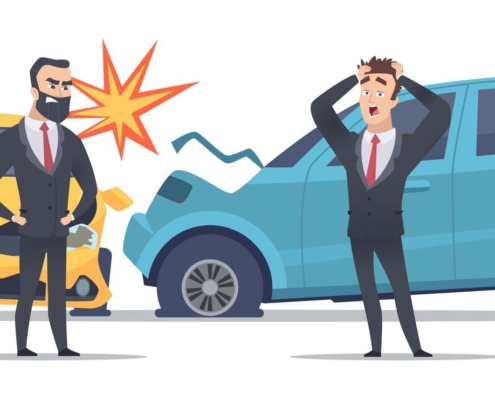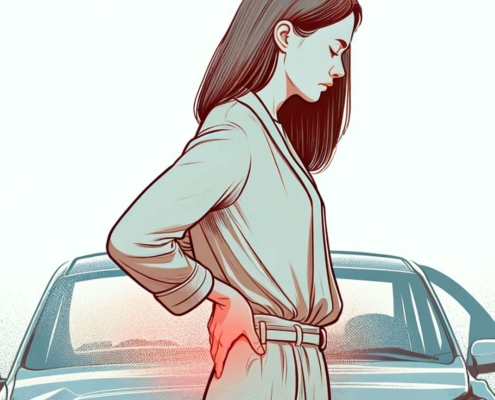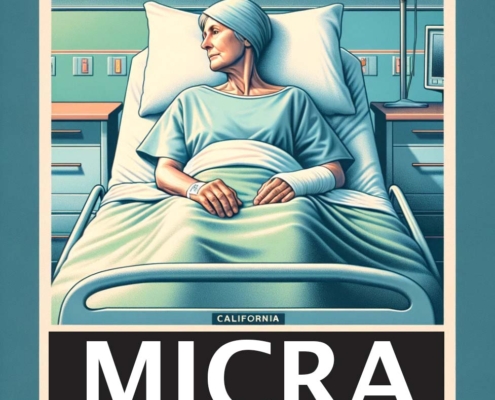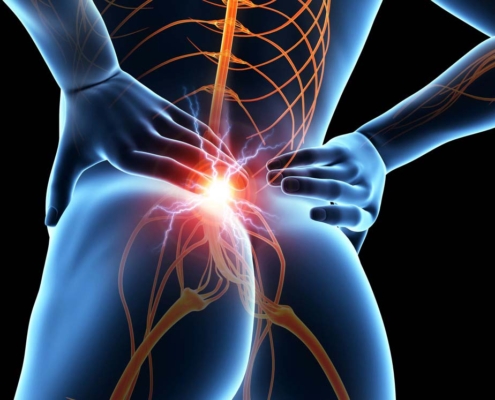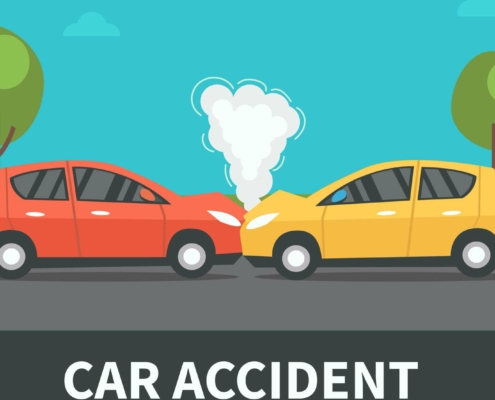Average payout for car accident
An individual who suffers a back injury from a car accident may file a claim to receive a payout, which can help with the resulting pain, expenses, and lifestyle changes. The median payout for a back injury is about $215,000. That said, a back injury settlement amount depends mainly on the kind of injury suffered. Also, your injury payout will also depend on your car accident injury lawyer experience in handling a claim. For example, I’ve handled over 1000 car accident injury cases in my 17 years as a lawyer.
Spinal cord injuries
Spinal cord injuries tend to get the largest payout. These injuries include fractured or dislocated vertebrae. The average car accident settlement payout is typically in the millions of dollars.
Intervertebral disc injuries
Injuries involving herniated discs tend to receive higher payouts than bulging or ruptured discs. Certain cases may be worth millions of dollars, while others may be little different than typical injury cases. The compensation payout will depend on:
- What the CT/MRI scan shows
- Whether there was any previous back injury
- How the injury is treated
- Physical symptoms and impact on quality of life
Herniated discs that require back surgery get the highest payout. This is because there are many risks that come with back surgery, including spinal fluid leak, infection, thrombophlebitis, and even death. Of course, surgery may offer more relief than more cautious treatment. In any case, a car accident claim with surgery will always garner a higher payout.
It should be noted, however, that most lumbar disc injuries from car accidents will get better ninety percent of the time without surgery.
Epidural steroid injections – no surgery
Epidural steroid injections can help with radiating back pain after a car accident. Juries tend to award high compensation payouts for injuries requiring this kind of treatment. It is no fun having a large needle inserted into one’s back, and jurors sympathize with the suffering involved. That said, even when injections are clearly needed, insurance companies are hard to convince. These cases are more likely to go to trial than others.
Soft tissue and whiplash injuries
Soft tissue injuries are less likely to receive a high settlement amount. These injuries include problems like whiplash. The settlement payouts in such cases will depend on the following factors:
- Whether there were pre-existing back injuries
- The credibility of the plaintiff
- The severity of the injury
- What insurance company is involved
- How significant the impact was
- The jurisdiction
In back injury cases, the plaintiff’s credibility is very important. Because these kinds of injuries are quite common, juries tend to be skeptical. Also, the seriousness of back injuries is often not apparent on MRI and CT scans.
How does a pre-existing injury affect car accident payout for new injuries
Car accident payout become infinitely more complex when pre-existing injuries are involved, such as spondylosis and spinal stenosis. Sometimes people have problems with their intervertebral discs without knowing it, and a car accident could trigger symptoms or make the problem worse. An insurance company may use an MRI to claim that a victim’s back already had issues at the time of the accident.
That said, a victim may still get a decent payout even with previous injuries. In the end, the law in California is that compensation should take into account the change in the victim’s condition following the crash. If an individual did not have pain prior to an accident, then developed medical issues afterward, the accident likely caused the injury.
To win this kind of case, it is important that a plaintiff have a lawyer and doctors who can describe the difference between pre-existing problems and the victim’s current condition. If the crash did not cause a change in one’s condition, then it is unlikely he or she will get a payout of significant value. The greater the change in condition, the larger the payout.
How much can you get for back pain in a car accident?
The following are some examples of past claims that found in favor of the car accident victim suffering from back injuries:
- In 2020, a Maryland man was sideswiped. The accident left him with a traumatic brain injury, various vertebral injuries, muscular damage, tendonitis, cuts, eye problems, and paresthesia in his left foot. As a result of the accident, the man suffered from headaches, cognitive issues, complications from a concussion, lumbar radiculopathy, and dizziness. The victim was awarded almost $600,000 for his injuries.
- In 2020, a woman in Maryland was struck by a vehicle that fled the scene. The woman has lumbar, thoracic, and cervical strains. She also suffered from cervical radiculopathy, PTSD, and sciatica. For her injuries, the woman received chiropractic care and physical therapy. She was awarded a payout of $145,000.
- In 2020, a Maryland woman’s car was rear-ended. Her pre-existing neck injury was aggravated as a result. The woman claimed that the other driver’s intoxication caused the accident. She was awarded a payout of almost $70,000.
- In 2019, a man in Maryland was rear-ended while waiting at a stoplight. The accident gave him a lower-back sprain and mobility issues. Unfortunately for him, the diagnostic tests did not show significant injuries, despite his pain. The insurance company offered a meagre $17,000, so the case proceeded to trial. In the end, the insurance company offered a $200,000 payout to settle the case.
- In 2019, a Texas minor was a passenger in a car involved in an accident. Her injuries included sprains and ruptures in her cervical spine. She received a settlement of nearly $40,000 to cover legal and medical expenses.
- In 2019, a woman in New Jersey was rear-ended by another vehicle, causing her car to strike the one in front of her. While the defendant argued that the plaintiff’s injuries were not serious, the woman in fact has three herniated discs that would cause lifelong pain. She was awarded one million dollars to account for pain and suffering and medical expenses.
- In 2019, a plaintiff in Illinois was struck by a car making a left turn at an intersection. The victim suffered a fractured vertebra and needed spinal decompression. The other driver was distracted and speeding, so failed to yield. The jury awarded the plaintiff 1.7 million dollars.
- In 2018, a husband and wife were struck by a vehicle in a Florida parking lot. The woman suffered a fractured vertebra, and the man fractured his pelvis. The plaintiffs only sought compensation for their medical expenses. The defendant argued that the couple were partially at-fault for the accident since they moved in front of the vehicle. The jury decided that the defendant was 60% negligent and the plaintiffs shared the rest of the blame. Each plaintiff received $60,000 for their medical bills.
- In 2017, a woman in Maryland was involved in a rear-end accident that worsened a pre-existing injury. She required several epidural injections. A settlement was reached a couple weeks before going to court.
- In 2017, a plaintiff in Maryland was rear-ended by a county bus. The plaintiff sued the county over their lumbar disc herniations. The county admitted liability but argued that the injuries were a result of the accident. The plaintiff only received a payout of $10,000, much less than what they were seeking.
- In 2017, a Maryland plaintiff was rear-ended and suffered cervical disc herniations, as well as radiculopathy. The jury awarded her a payout of $60,000.
- In 2017, plaintiffs in Oregon were stopped at a red light when a truck struck the back of their vehicle. One victim suffered lower back and neck injuries, including disc bulges which required surgery. There was also the possibility of future surgeries. The second plaintiff suffered a facet joint injury that required treatment every six months and potentially needed surgery in the future. The jury awarded the first victim some $300,000, and the second $200,000. Both received an additional $40,000 in non-economic damages.
What is the average car accident settlement?
The average payout for a car accident back injury ranges from $15,000 to $100,000. However, some cases will go into the millions. It is hard to pinpoint a specific average because back injuries range in severity. Some people may suffer from whiplash, and others may become paralyzed. For this reason, average settlement values are fairly meaningless.
What Affects the Payout of a Back Injury Case?
A car accident settlement payout is mainly determined by the severity of the plaintiff’s injury. Some car accident injuries are minor, such as back sprains and whiplash. Others are more serious and result in permanent, lifelong injuries, like fractured vertebrae.
The more serious an injury, and the more treatment it demands, the higher the case’s payout. Another factor that affects the payout value is the plaintiff’s age. Younger plaintiffs tend to get higher settlements since they are less likely to have degenerative back problems or other pre-existing injuries.
How hard are back injuries to prove?
Some back injuries, like soft-tissue injuries, can be difficult to prove because they do not show up on x-rays or MRIs. A physical examination is needed to diagnose these injuries, and these evaluations are more subjective in nature. Back injuries that show up on x-rays usually get bigger payouts because they are easier to prove in court.
How does a pre-existing injury affect compensation for new injuries?
An individual can still get a car accident payout for an injury even if they have pre-existing injuries. If a plaintiff has a history of back issues or a pre-existing injury, the jury may think that some part of the injury was not caused by the car accident. If this is the case, then the victim’s payout may be lower. However, he or she will still receive compensation for their injury.
Why does my back hurt after a car accident?
A car accident may easily injure an individual’s back due to the force involved in the crash. Because a back injury may be serious enough to cause physical and mental issues after the accident, a victim has the right to a settlement payout. The payout value will depend on the quality of injury and how it occurred.
The spinal cord is a collection of nerves that compose the central nervous system, along with the brain. The spine extends from the bottom of the brain to the tailbone and is about a foot and a half in length. Vertebrae are ring-like bones that form a column protecting the spinal cord. There are five primary parts of the spinal column: the cervical vertebrae are at the top, followed by the thoracic vertebrae, the lumbar vertebrae, the sacrum, and finally the coccyx, known as the tailbone. Between each of these vertebral bones is a disc, which acts as a shock absorber.
There are 31 spinal nerve pairs that branch from the spinal cord. These nerves are responsible for sending and receiving the signals that control sensory perception, bodily functions, and movement. These link the central nervous system to the rest of the body.
If the spinal cord suffers damage, an individual may lose mobility, function, or feeling. The spine does not, in fact, need to be severed to cause a serious, long-term injury. Often, the spinal cord remains intact after an accident, but surrounding damage leads to loss of function and pain. Approximately a quarter of a million people in the United States have some form of injury to their spine.
Other kinds of back injuries include ruptured discs, pinched nerves, and spinal stenosis. While these injuries may not be as debilitating as others, they can still cause numbness, weakness, and pain.
Car accidents are a leading cause of death in California and can leads to serious spinal injuries. While rollover accidents are rare, they can cause damage to the spinal cord. More common kinds of car accidents include rear-end, sideswipe, side-impact, and head-on crashes. Injuries common in these types of accidents include damage to intervertebral discs, strains, and pinched nerves.
Again, should an individual seek a settlement after their car accident, their payout value will be contingent on the manner of their injury, their medical prospects, and losses resulting from their injury.
Types of back injuries from car accidents
Whiplash
Whiplash is a very common injury resulting from a car accident. It is characterized by stiffness and pain that comes from the overextension of the neck. Even in low-speed accidents, an individual is at risk of whiplash. Symptoms of whiplash include trouble sleeping, headaches, poor concentration, vision problems, weakness, depression, tinnitus, and pain in adjacent parts of the body. Often, a case of whiplash will resolve on its own with time and does not merit a lawsuit. That said, whiplash can be severe depending on the nature of the accident.
Vertebral fracture
The majority of injuries to the spinal cord derive from trauma to the vertebrae. In fact, car accidents are the leading cause of spinal injuries for people under the age of 65. A complete spinal cord injury means that sensory and motor function below the point of impact are disrupted. An incomplete spinal cord injury involves partially limited function. Symptoms of a spinal cord injury include loss of bladder and bowel function, as well as trouble breathing.
Bulging or herniated disc
A car accident can injure the intervertebral discs. If a disc becomes inflamed, it can swell, irritating the nerves and causing pain. If a disc ruptures, spilling its contents, then a hernia occurs. A hernia is likely to apply pressure to nerve roots, which can cause significant discomfort.
Pinched nerve/radiculopathy
Because the spine is compact, when things move out of place, problems can easily arise. When the tissues surrounding nerve roots change in nature, it can result in a pinched nerve. Radiculopathy is when weakness, numbness, and pain radiate from the problematic nerve to other parts of the body. Pinched nerves are often the result of herniated discs.
C4/C5 and C5/C6 disc injuries
These intervertebral disc injuries are the most common to happen in the neck. Symptoms of this injury include pain in the arms and shoulders, which mainly affects people with physically demanding occupations.
Degenerative disc disease
As individuals age, intervertebral discs can degenerate from wear-and-tear. Not everyone with this problem will experience symptoms. A car accident can accelerate the degeneration or activate symptoms.
Central cord syndrome
When the neck is extended by force, the spinal cord may be compressed and damaged. The cord may swell, bleed, and bruise. The center of the cord is responsible for moving the arms, and it is most severely damaged in this situation. Therefore, a common symptom if weakness in the arms, which makes everyday tasks difficult to perform. The legs may also be impacted by this kind of injury.
Secondary injuries
Injuries to the spinal cord may cause other health issues, such as cardiovascular, urinary, respiratory, and bowel problems. There could also be muscular pain, pressure ulcers, fertility and sexual difficulties, bone fractures, osteoporosis, and depression.
Studies have discovered a connection between injuries to the spine and head trauma. Victims of car accidents with spinal cord injuries were later diagnosed with a traumatic brain injury between twenty-five to fifty percent of the time. One-third of individuals with spinal cord injuries also suffered from serious head injuries.
What types of car accidents cause back injuries?
The neck, or cervical spine, is the part of the back most often injured in car accidents. While seatbelts are still beneficial and necessary, they permit the neck to bend to the front, back, and side while keeping the rest of the body in place. When the body collides with the restraint, other spinal injuries may also occur.
In frontal-impact accidents, the torso and head are thrust forward. The problem is that the head and chest may move at different speeds, which can damage the neck. When the seatbelt stops the torso from jolting forward in an accident, the head continues moving, which can cause damage to the neck. Hernias and tears in the neck are common, specifically in the C5/C6 vertebrae.
An accident that happens at a high-speed can cause a chance fracture in the lumbar or thoracic spine. This happens due to the spine bending against the seatbelt. A chance fracture is when the front of the spine is squeezed and the back is cracked apart. This can crush or tear the spinal cord.
Rear-end accidents see the driver’s torso pushed backward into the seat. The force outs pressure on the thoracic discs and vertebrae. The neck, meanwhile, if forced backward, which can cause damage to the discs, cervical vertebrae, ligaments, and spinal cord. The lap restraint may also injure the lumbar area of the spine.
People sitting on the side of impact when a vehicle is struck tend to receive more severe injuries. When a car is struck from the side, the body moves sideways, versus forward or back. The seatbelt keeps the lower body in place, but cannot keep the head, neck, and torso from moving. Sideways bending and impact with the car door can cause further injury.
When it comes to motorcycle accidents, the thoracic spine usually receives the most damage. Because motorcycles lack seatbelts, the body bends normally at the midsection. More than half of motorcycle accidents involve injuries to many parts of the spine, and ten percent of accidents involving such back injuries are fatal.
The severity of an individual’s back injury after a car crash will depend on the speed and direction of the crash. The faster a car was traveling, the more likely there will be a severe injury. This is why it is important to travel at the speed limit, drive carefully, and not to ride with an intoxicated driver.
When a vehicle rolls over during a collision, there is a much greater risk of spinal injuries. The body endures many changes in direction and at great speed. The head may hit the roof of the car or the door, and this impact can put the spine at risk. Also, there is a chance that a person’s body may be ejected from the car. It is more common for SUVs to rollover due to their top-heavy nature. Even when they do not roll, SUVs are more likely to cause spinal injuries in a car accident.
There are particular risk factors that make an individual more likely to suffer a spine injury in a car accident. Young men are at the greatest risk because they are more likely to drive dangerously. Additionally, people who weigh more will endure greater forces upon impact, making their injuries more severe.
Seatbelts can help reduce the risk of a spinal injury, especially in rear-end and head-on accidents.


